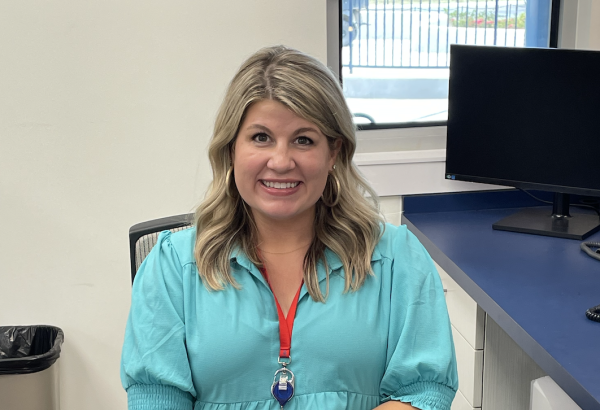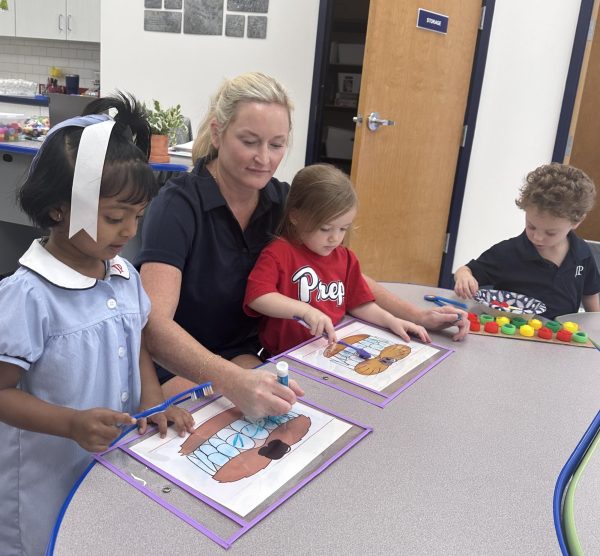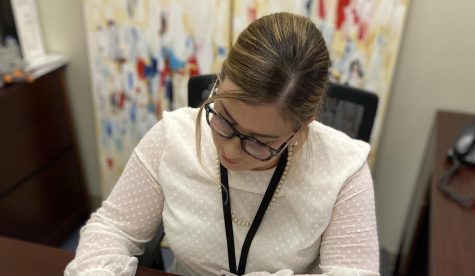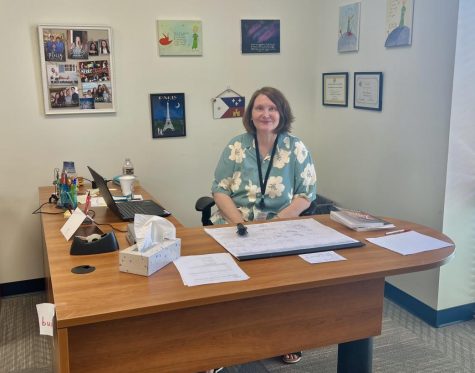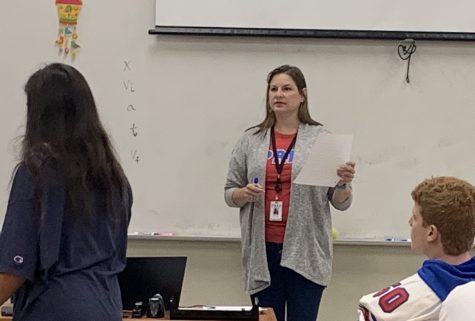Math + Hallways = Fun (?)
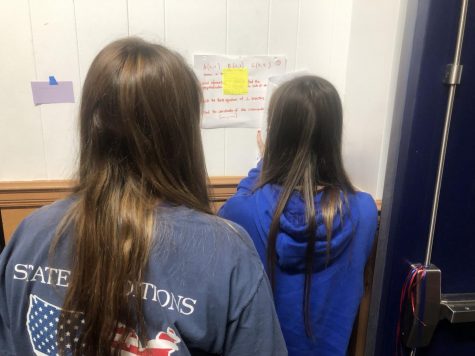 It appears to be a normal day at Jackson Preparatory School; class is in session, and the hallways are deserted. But there’s something unusual going on.
It appears to be a normal day at Jackson Preparatory School; class is in session, and the hallways are deserted. But there’s something unusual going on.
The door to Ms. Kimberly Van Uden’s math classroom opens, and her students venture away from their natural habitat into the silent halls. But why are these students leaving the classroom while class is still supposed to be in session?
Certain math teachers are rather fond of having their students work math problems in the hallways. Sheets of printer paper in various colors are affixed to the walls of the senior high building, and students scurry about, attempting to work as many problems as they can before the end of the period.
What is the purpose behind this unorthodox method of learning? Ms. Van Uden, who teaches Honors Trigonometry/Pre-Calculus and AB and BC Calculus, cited a Washington Post article titled “Why students shouldn’t be forced to spend so much time sitting at desks in class.”
 The article primarily focuses on the link between student activity and focus and creativity. Young children are often learning in a movement and activity focused environment; this all changes once they enter elementary school and are expected to sit quietly in desks and learn for extended periods of time. It has long been acknowledged that physical activity improves brain activity and is beneficial to learning. The article also mentions the increasing usage of technology in the classroom which might not be as beneficial as we are lead to believe. Schools in South Korea and Finland, who’s students have consistently scored high in international testing, actually promote using less technology in in the classroom. Teachers in these schools prefer hands on learning methods and limit time spent using computers and cellular phones.
The article primarily focuses on the link between student activity and focus and creativity. Young children are often learning in a movement and activity focused environment; this all changes once they enter elementary school and are expected to sit quietly in desks and learn for extended periods of time. It has long been acknowledged that physical activity improves brain activity and is beneficial to learning. The article also mentions the increasing usage of technology in the classroom which might not be as beneficial as we are lead to believe. Schools in South Korea and Finland, who’s students have consistently scored high in international testing, actually promote using less technology in in the classroom. Teachers in these schools prefer hands on learning methods and limit time spent using computers and cellular phones.
How did this influence Mrs. Van Uden’s teaching methods? She said that once Jackson Prep switched to a 70 minute block schedule, she realized that having a change of pace some time during the class period would be vital to maintaining the students’ attention spans. She also realized that having twenty plus students in a relatively small classroom begins to feel cramped, so using the hallway as a “giant classroom”allows students to have a change of pace and location, as well as be able to move around, all while still learning. This also forces students to figure out the problems for themselves rather than just watch a teacher work; and students never fall asleep while working the hallway.
Other teachers who have their students working in the hallway include Ms. Laura Hepner and Ms. Kayton Barnes.
 What do students think of this style of teaching? Answers vary. Sophomore Joseph Watts is not a fan of the idea. He prefers to work problems while sitting in a desk where he doesn’t have to worry about holding his calculator, paper, and pencil, all while still working problems, and finds math in the hallway “inefficient and annoying.”
What do students think of this style of teaching? Answers vary. Sophomore Joseph Watts is not a fan of the idea. He prefers to work problems while sitting in a desk where he doesn’t have to worry about holding his calculator, paper, and pencil, all while still working problems, and finds math in the hallway “inefficient and annoying.”
Fellow sophomores Hawthorne Cleveland and Bradley Stafford disagree. They both enjoy the change of pace as well as the chance to work more with the other students.
It seems that the current sophomore class is more open to the idea of leaving the classroom to work math problems, but the junior class prefers a more quiet, traditional setting.
While the teachers appear to be in agreement, the phenomenon of working math problems in the hallway appeals to some students more than others.




